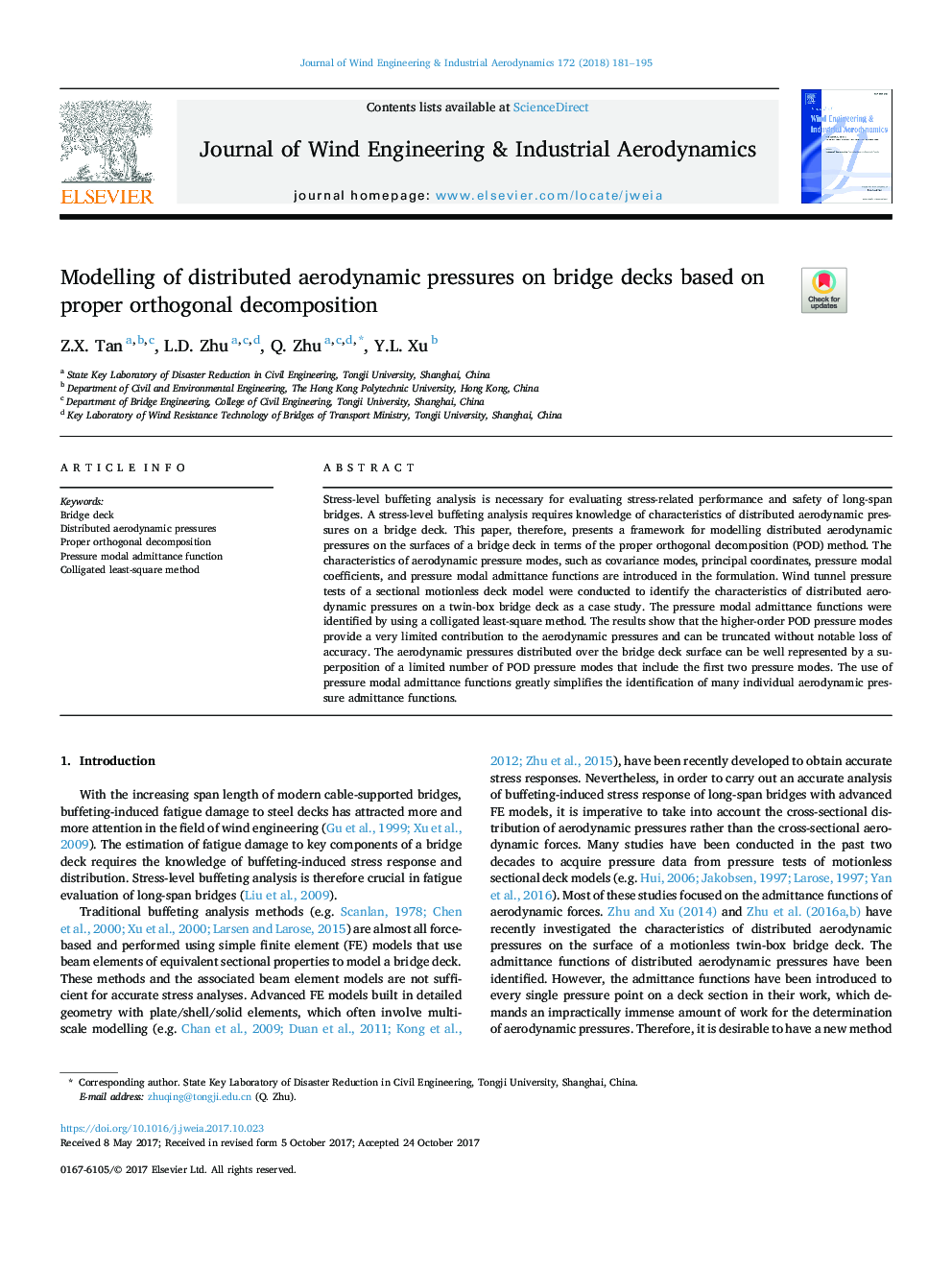| Article ID | Journal | Published Year | Pages | File Type |
|---|---|---|---|---|
| 6757208 | Journal of Wind Engineering and Industrial Aerodynamics | 2018 | 15 Pages |
Abstract
Stress-level buffeting analysis is necessary for evaluating stress-related performance and safety of long-span bridges. A stress-level buffeting analysis requires knowledge of characteristics of distributed aerodynamic pressures on a bridge deck. This paper, therefore, presents a framework for modelling distributed aerodynamic pressures on the surfaces of a bridge deck in terms of the proper orthogonal decomposition (POD) method. The characteristics of aerodynamic pressure modes, such as covariance modes, principal coordinates, pressure modal coefficients, and pressure modal admittance functions are introduced in the formulation. Wind tunnel pressure tests of a sectional motionless deck model were conducted to identify the characteristics of distributed aerodynamic pressures on a twin-box bridge deck as a case study. The pressure modal admittance functions were identified by using a colligated least-square method. The results show that the higher-order POD pressure modes provide a very limited contribution to the aerodynamic pressures and can be truncated without notable loss of accuracy. The aerodynamic pressures distributed over the bridge deck surface can be well represented by a superposition of a limited number of POD pressure modes that include the first two pressure modes. The use of pressure modal admittance functions greatly simplifies the identification of many individual aerodynamic pressure admittance functions.
Related Topics
Physical Sciences and Engineering
Energy
Renewable Energy, Sustainability and the Environment
Authors
Z.X. Tan, L.D. Zhu, Q. Zhu, Y.L. Xu,
